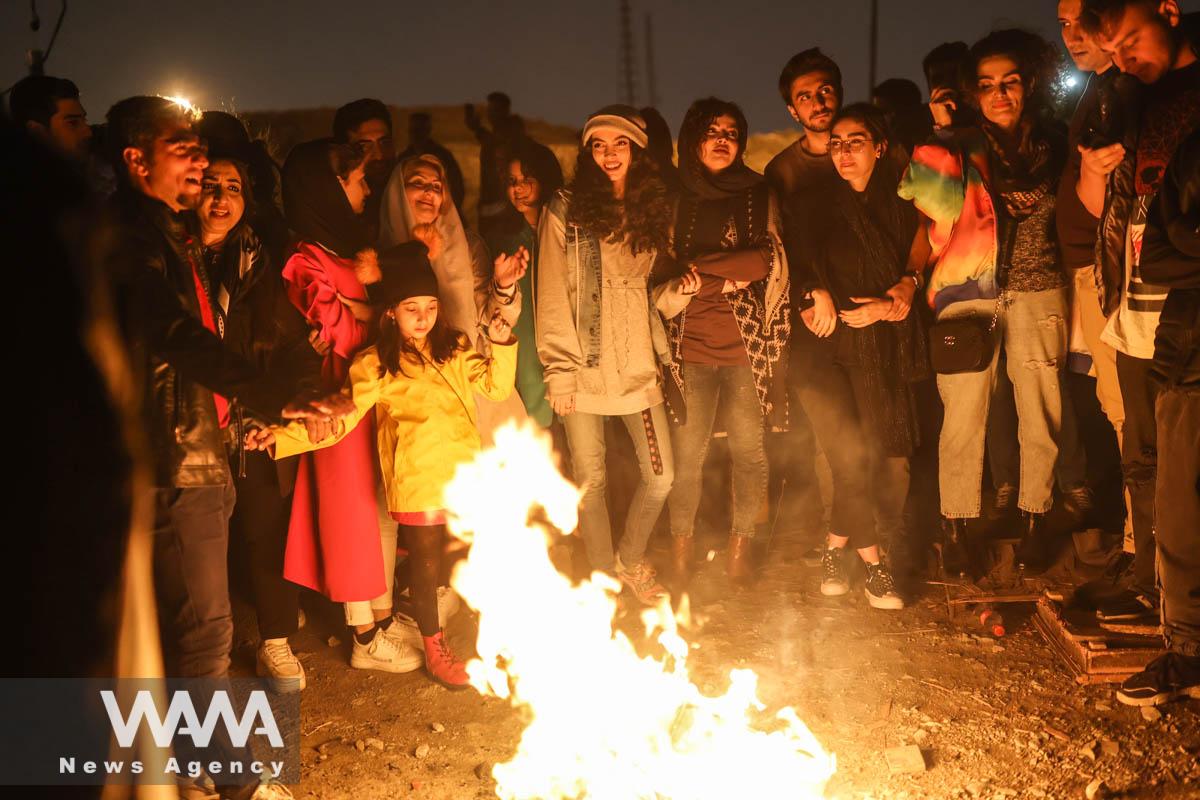Festival of Fire in Iran
WANA (Mar 14) – Festival of Fire (Chaharshanbe Suri) is held The Last Wednesday of a year (marks the arrival spring). Fire and light hoped for health and happiness through the coming year. This is the ancient festival of Iran, Azerbaijan, Iraq, Afghanistan, Tajikestan and Turkey and date goes back at least 1700 BCE. Iranians celebrate an old tradition called “Chahar Shanbeh Suri”.
It falls on the last Tuesday evening of every Persian calendar year. Iranians come out with friends and family to celebrate and enjoy this occasion. Chahar Shanbeh Suri or “Festival of Fire” is a prelude to Nowruz which marks the arrival of the spring season.
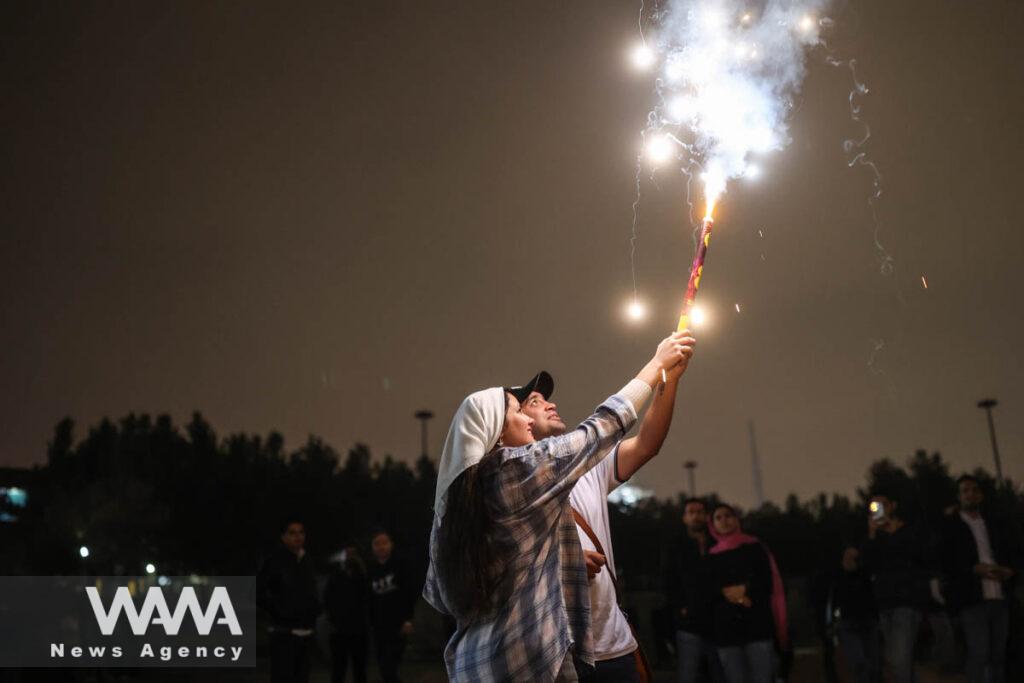
Iranians light fireworks during the Wednesday Fire celebration (Chahar Shanbeh Soori in Persian) in a park in Tehran, Iran March 14, 2023. Majid Asgaripour/WANA (West Asia News Agency)
Chahar Shanbeh Suri celebration usually starts in the evening, with people making bonfires in the streets and jumping over them. Some believe jumping over bonfires is a way of taking away negative energy, sickness, and problems and in turn getting fulfillment, warmth, and energy. Chaharshanbe Suri serves as a cultural festival for many Iranians.
Jumping over the fire is an ancient tradition that is practiced during the Chaharshanbe Suri festival in Iran. The festival, which takes place on the last Wednesday before the Persian New Year, is a time for Iranians to come together and celebrate the arrival of spring and the renewal of nature. The tradition of jumping over the fire is a central part of the festival and is believed to bring good luck and ward off evil spirits.
The act of jumping over the fire is known as “Chaharshanbe Soori” in Persian, which means “Red Wednesday”. It is said that the flames of the fire represent the burning away of the previous year’s misfortunes and the purification of the soul. Jumping over the fire is believed to symbolize the leap from darkness and into the light, from winter into spring.
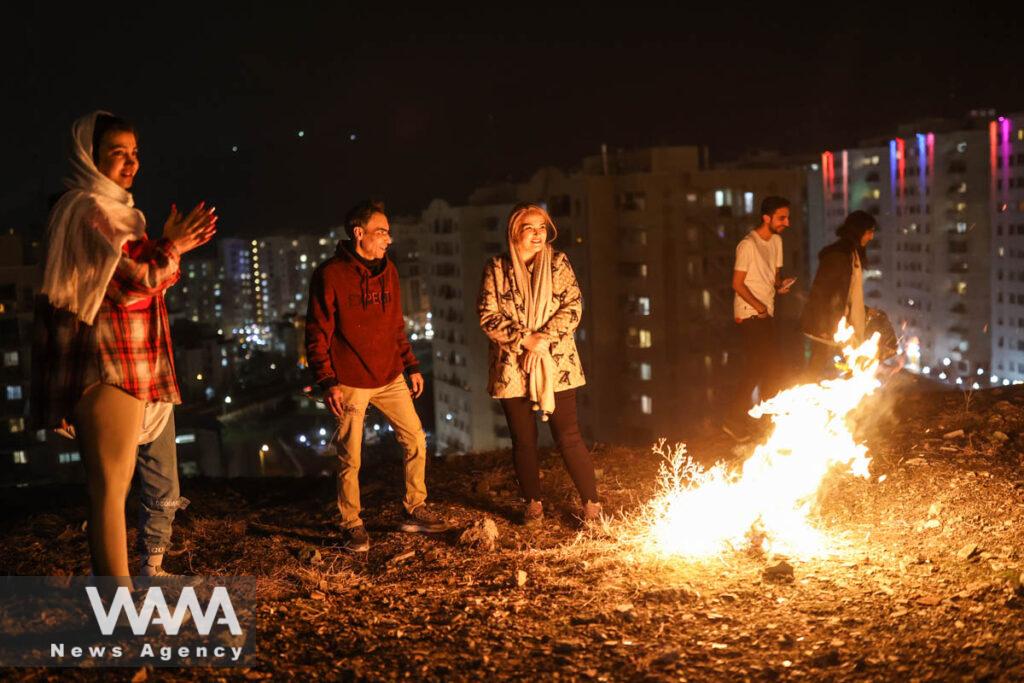
Iranians stand by the fire during the Wednesday Fire celebration (Chahar Shanbeh Soori in Persian) in a park in Tehran, Iran March 14, 2023. Majid Asgaripour/WANA (West Asia News Agency)
Preparations for Chaharshanbe Suri begin days before the festival, with people gathering firewood, preparing firecrackers and fireworks, and making special foods for the occasion. On the night of the festival, families and friends gather together to light bonfires in their backyards or in public parks. The fires are often decorated with colorful ribbons and other decorations, and people dance around them while singing traditional songs.
The tradition of jumping over the fire is performed by people of all ages, from young children to the elderly. Before jumping, people recite the phrase “Sorkhi-ye to az man, zardi-ye man az to”, which means “May your redness be mine, and my paleness be yours”. This phrase is believed to transfer the person’s troubles and problems to the fire, while bringing good fortune and blessings to the individual.
Jumping over the fire requires courage and agility, as the flames can reach several feet high. However, it is important to note that the tradition is not without its risks, and caution should be taken to ensure the safety of participants. In recent years, there has been some controversy surrounding the tradition of jumping over the fire, with some Iranian officials expressing concern over the potential for accidents and injuries.
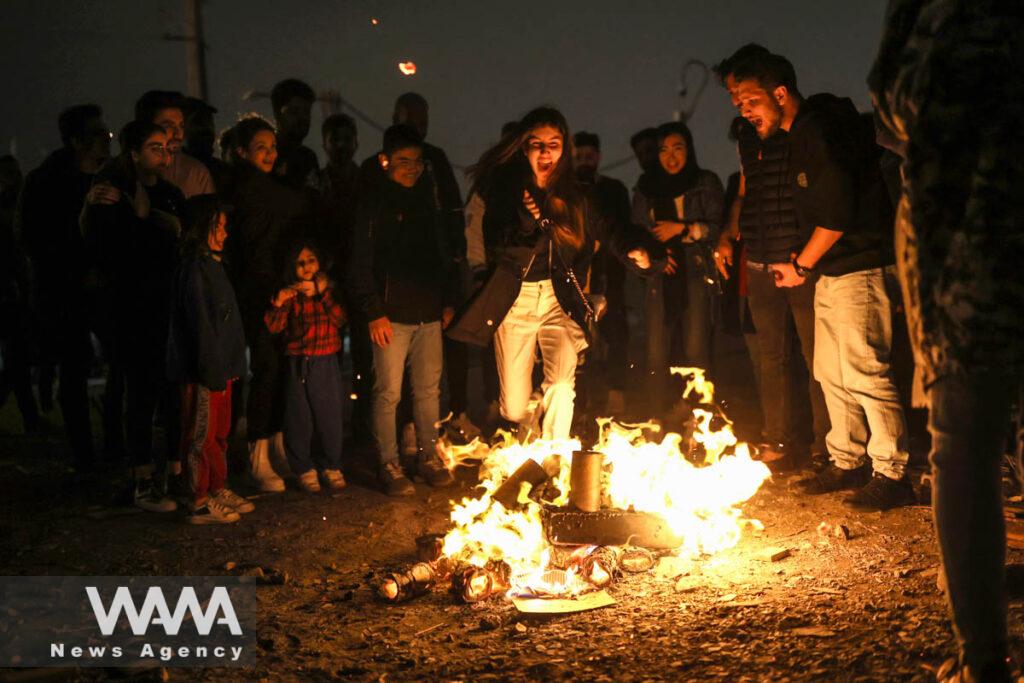
An Iranian woman jumps over a fire during the Wednesday Fire celebration (Chahar Shanbeh Soori in Persian) in a park in Tehran, Iran March 14, 2023. Majid Asgaripour/WANA (West Asia News Agency)
Despite these concerns, many Iranians continue to view the tradition of jumping over the fire as an important part of their cultural heritage. It is a time to come together, to celebrate the arrival of spring, and to renew one’s spirit. The act of jumping over the fire is a symbol of the strength and resilience of the Iranian people, and a reminder that even in the darkest of times, there is always hope for renewal and transformation.
In addition to the tradition of jumping over the fire, another unique aspect of the Chaharshanbe Suri festival in Iran is the practice of spoon-banging. This tradition involves children and young adults taking to the streets with spoons and other kitchen utensils to bang on pots and pans, creating a cacophony of noise and excitement.
The origins of spoon-banging are not entirely clear, but it is believed to have been a way for young people to celebrate the arrival of spring and to drive away evil spirits. The noise of the banging is said to scare away any malevolent forces and to bring good luck for the coming year.
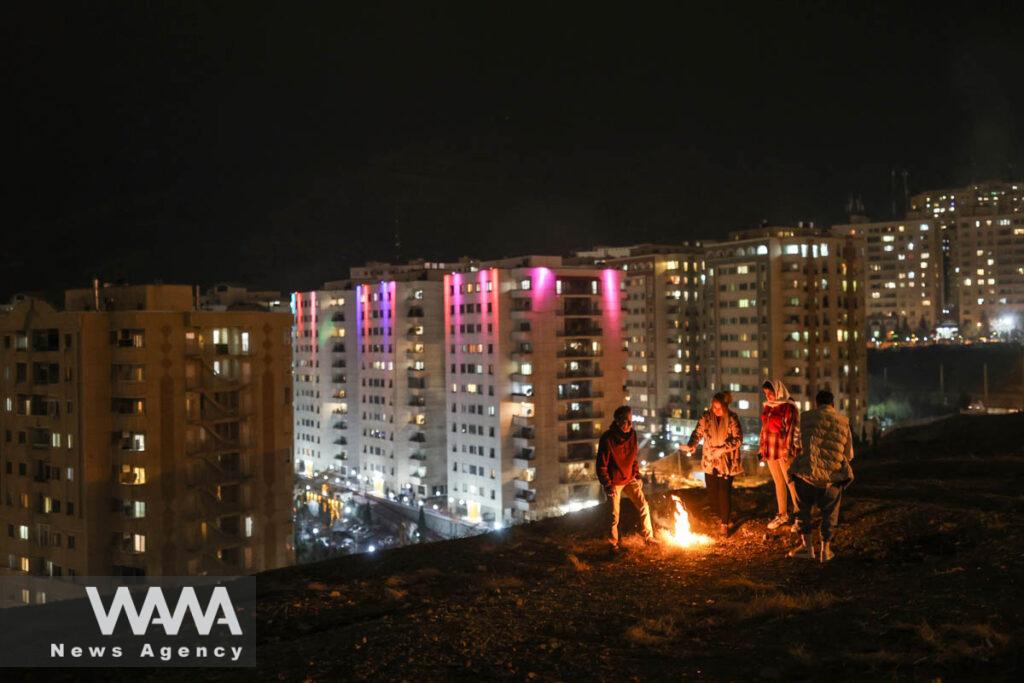
Iranians stand by the fire during the Wednesday Fire celebration (Chahar Shanbeh Soori in Persian) in a park in Tehran, Iran March 14, 2023. Majid Asgaripour/WANA (West Asia News Agency)
The tradition of spoon-banging has evolved over time, with some participants adding firecrackers and other noisemakers to the mix. It has also become a way for young people to express their creativity, with some designing and decorating their spoons and other utensils with colorful ribbons, flowers, and other decorations.
Spoon-banging takes place in the evening on the night of Chaharshanbe Suri. Children and young adults gather in groups, armed with spoons and other utensils, and move through the streets, banging on pots and pans and making as much noise as possible. It is a lively and boisterous celebration, with participants shouting and singing traditional songs as they go.
The tradition of spoon-banging is not without controversy, however. Some Iranian officials have expressed concern over the noise pollution caused by the tradition, and have called for restrictions or bans on the practice in some areas. Despite these concerns, many Iranians continue to view spoon-banging as an important part of the Chaharshanbe Suri festival, and a way to connect with their cultural heritage.
Source: Social Media

